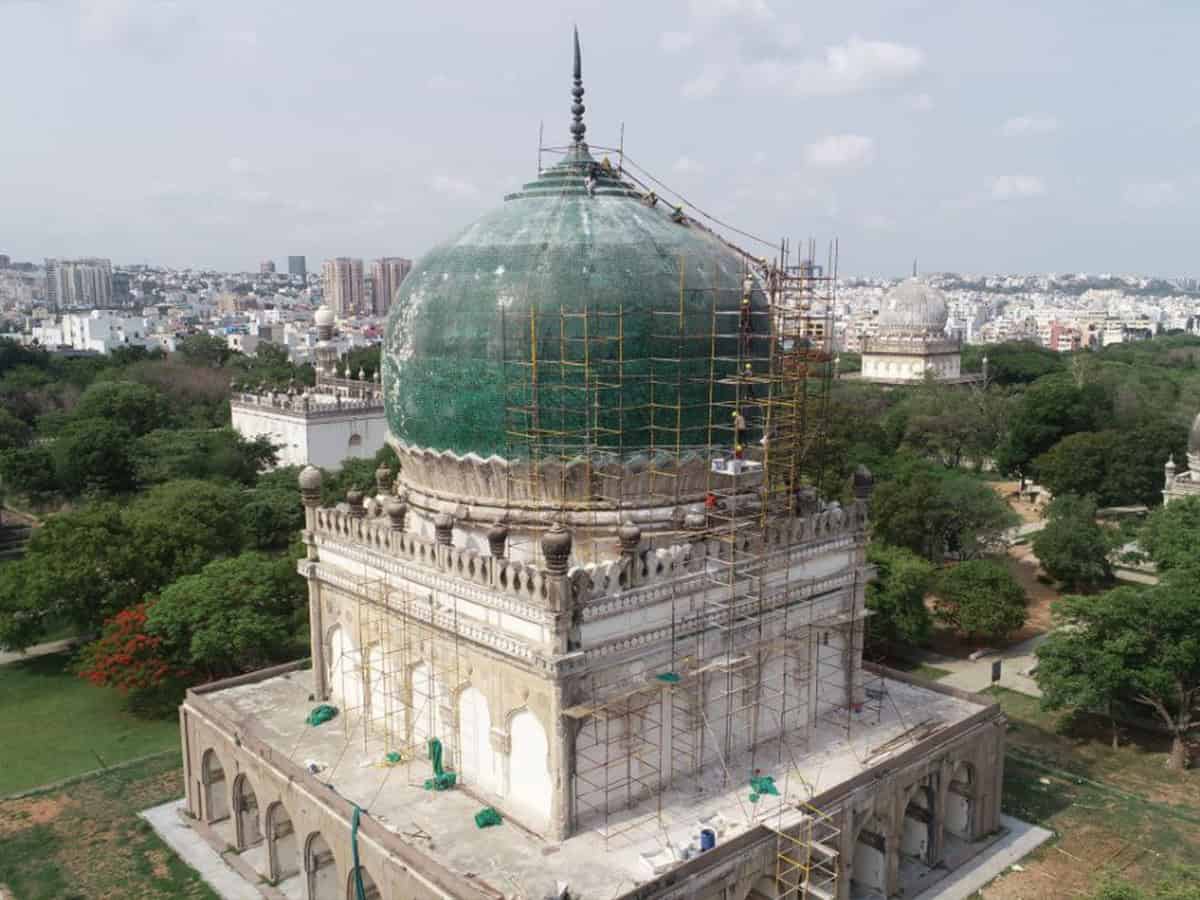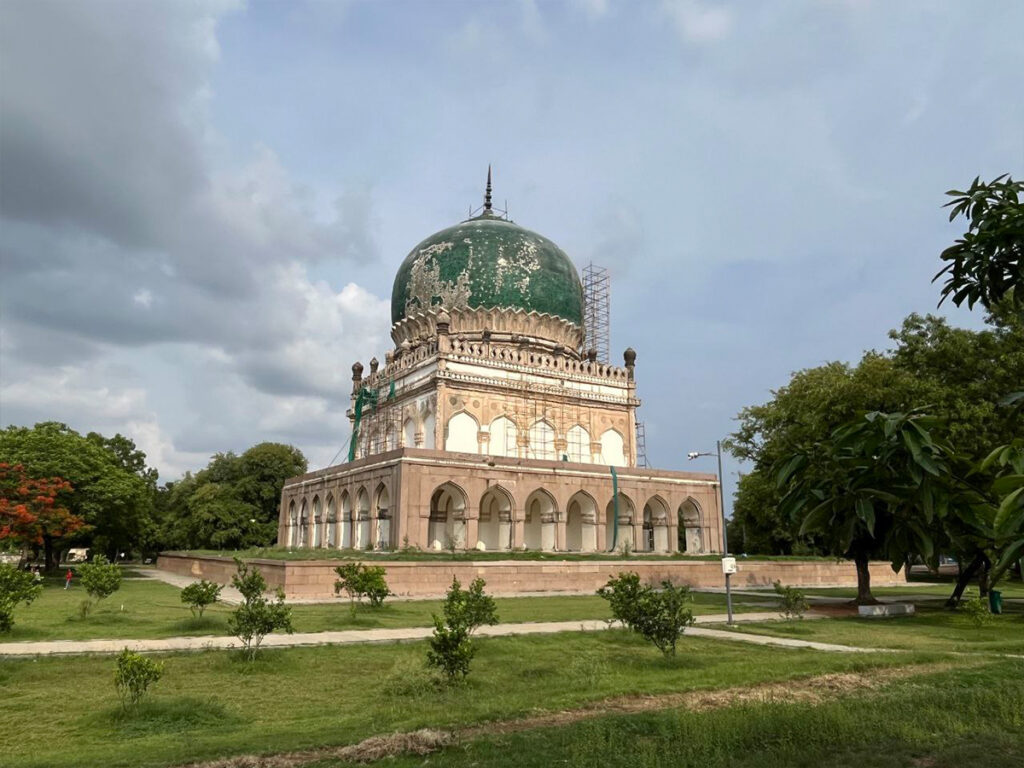
Hyderabad: Every visitor who has been to the historic Qutb Shahi tombs in the city is usually in awe of the place. And often, the incredulous restoration of the site is also met with a question: will the ongoing works also include restoration of the tilework on some of the tombs? The answer to this was finally revealed last week when the Aga Khan Trust for Culture (AKTC) unveiled the dome of Sultan Mohammed Qutb Shah’s tomb, which has now been adorned with glazed green tiles in all its glory.
The tilework on the monument at the Qutb Shahi Tombs has brought in much joy amongst heritage enthusiasts especially given that it is one of the few heritage sites in Hyderabad that is being fully restored. Prior to this, the restored stepwells in the historic Qutb Shah tombs also bagged the ‘Award of Distinction’ at the UNESCO Asia-Pacific Awards for Cultural Heritage Conservation.

Sultan Mohammed Qutb Shah was the fifth monarch of the Golconda or Qutb Shahi dynasty that founded Hyderabad. While the AKTC also found small patches of tileworks or broken tiles on other tombs such as that of his predecessor Mohammed Quli Qutb Shah (who was also Hyderabad’s founder), only the fifth king’s tomb has been restored fully with tiles due to the kind of fine work involved.
A total of six colours on the tiles will be part of the final design, said an official from AKTC. Restoration works at the Qutb Shahi tombs has been going from over a decade, and the site has also been subject to several encroachments over the years. However, in spite of the hardships, the the AKTC in association with the Telangana government and Interglobe Foundation and other donors has managed to not only restore, the place, but also perhaps created a blueprint on how to carry out painstaking restorations.

Another tomb that has beautiful tilework is that of Sultan Ibrahim Qutb Shah (1550-80), the third of the Golconda kings. One side of the tomb reveals a pattern of the blue, green and yellow mosaic tiles that still remain on the monument. However, the AKTC will not be restoring the tile work in this case. The entire tombs complex over the years has seen a remarkable change, especially since its stepwells have also been restored fully.
Getting the tile work done was also no easy task for the AKTC, as those were sent for testing to make sure it matched the original tiles that were remaining on the tomb.
Qutb Shahi tombs the next big tourist attraction?
The historic site is today becoming a major attraction for tourists thanks to the spectacular restoration carried out by the AKTC. The Qutb Shahi tombs has close to 100 structures, which include tombs, a Hamam (Turkish bath), mosques, gardens and unmarked graves, apart from stepwells. The necropolis was historically connected to the Golconda fort, which was a walled-city before Hyderabad was founded in 1591. However, today, due to local encroachments on the site, the pathway connecting the fort and the tombs complex has been built upon.
The Qutb Shahi tombs is the royal necropolis of the Qutb Shahi or Golconda dynasty (1518-1687), which once ruled from the Golconda fort, and later founded Hyderabad in 1591.
History of Hyderabad Golconda fort
The Golconda Fort’s origins are traced back to the 14th century when the Rajah of Warangal Deo Rai (under the Kakatiya Kingdom which ruled from Warangal) built a mud fort. It was later taken over by the Bahmani Empire between 1358 and 1375. It was later developed into a full-fledged citadel by Sultan Quli who founded the Qutb Shahi kingdom in 1518 following the death of last sovereign Bahamani emperor Mahmud Shah Bahamani.
Sultan Quli was earlier a commander and later governor of Tilang (Telangana), under the Bahamani Empire (1347-1518), when its second capital was at Bidar. Sultan Quli, who was originally from Hamadan, rose to the level of Governor under the Bahamani empire. At this point of time he was given the fort, which he began developing into a walled-city. It eventually came to be called Golconda Fort (name derived from Telugu Golla-conda, or shepherds hill).
The Charminar is Hyderabad’s foundational monument. Built in 1591, it was constructed to mark the city’s establishment by Mohammed Quli Qutb Shah, the fourth ruler of the Qutb Shahi (or Golconda) dynasty. Prior to the Charminar being built, the Golconda fort was a walled city, from where the first three kings Qutb Shahi kings had ruled.



